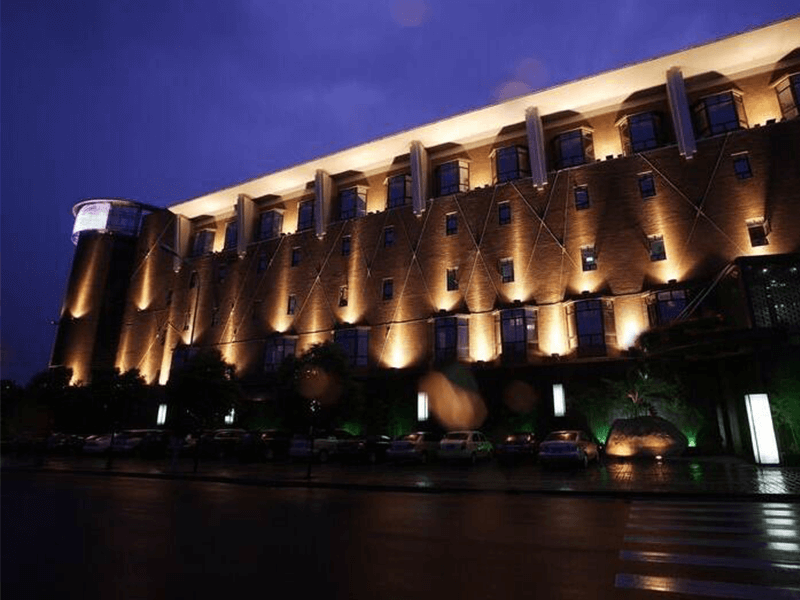1. What are LED floodlights, and how do they work?
LED floodlights are high-output lighting fixtures that use Light Emitting Diodes (LEDs) to produce light. LEDs pass an electric current through a semiconductor, emitting photons, resulting in visible light.
2. What are the advantages of using LED floodlights?
LED floodlights offer numerous advantages, including energy efficiency, long lifespan, reduced maintenance, instant illumination, and application versatility.
3. How do LED floodlights compare to traditional lighting technologies regarding energy efficiency?
LED floodlights are much more energy-efficient than traditional technologies, consuming up to 80% less electricity while producing the same or even higher illumination levels.
4. Are LED floodlights suitable for outdoor use?
Yes. Due to their durability and weather resistance, LED floodlights are well-suited for outdoor applications, including security lighting, landscape illumination, and architectural lighting.
5. What are the critical applications for LED floodlights?
LED floodlights are used for various applications, such as outdoor area lighting, sports field illumination, façade lighting, and accentuating architectural features.
6. Do LED floodlights come in different color temperatures?
Yes, LED floodlights are available in various color temperatures, ranging from warm (2700K) to cool white (6500K), allowing you to choose the desired ambiance.
7. What is the lifespan of LED floodlights compared to traditional bulbs?
LED floodlights have a significantly longer lifespan, often up to 50,000 hours or more, whereas traditional bulbs typically last around 1,000 to 15,000 hours.
8. Can LED floodlights be used with dimmer switches?
Many LED floodlights are compatible with dimmer switches, but verifying their dimmability is essential before installation.
9. Are LED floodlights easy to install?
Yes, LED floodlights are relatively easy to install. They often come with mounting hardware and clear instructions. However, professional installation may be required for specific applications.
10. Do LED floodlights require special maintenance?
LED floodlights require minimal maintenance. Regular cleaning and occasional inspections for loose connections are typically sufficient to ensure their optimal performance.
11. How do I choose the correct brightness (lumens) for my lighting needs?
Consider the area size, lighting goals, and task requirements to determine the appropriate brightness. Manufacturers provide lumen output information to help you make an informed choice.
12. What is the beam angle of LED floodlights, and how does it affect lighting distribution?
The beam angle determines how widely or narrowly light is distributed. Smaller beam angles create focused, spotlight-like illumination, while larger angles provide broader coverage.
13. Can LED floodlights be used for security purposes?
Yes, LED floodlights are often used for security lighting due to their ability to provide bright illumination and compatibility with motion sensors.
14. Do LED floodlights produce heat like traditional bulbs?
LED floodlights produce significantly less heat than traditional bulbs, making them safer and more energy-efficient.
15. Are there any environmental benefits to using LED floodlights?
Yes, LED floodlights reduce carbon emissions due to their energy efficiency. They also contain no hazardous materials like mercury, making disposal safer for the environment.
16. What are the potential cost savings when switching to LED floodlights?
LED floodlights can result in substantial cost savings by reducing electricity bills, maintenance expenses, and the frequency of bulb replacements.
17. Can LED floodlights be used with motion sensors or smart lighting systems?
Yes. Many LED floodlights are compatible with motion sensors and can be integrated into smart lighting systems, allowing for energy-efficient and automated control.
18. Do LED floodlights come in different sizes and shapes?
Yes, LED floodlights are available in various sizes and shapes to accommodate different lighting needs and installation preferences.
19. What should I look for regarding warranties and quality when buying LED floodlights?
Look for LED floodlights with comprehensive warranties that cover a reasonable duration. Choose products from reputable manufacturers known for consistent quality and adherence to industry standards.
